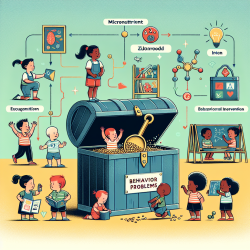Introduction
As practitioners dedicated to improving outcomes for children, it is essential to stay abreast of cutting-edge research that can inform and enhance our therapeutic approaches. The study titled Machine-learning classification of 22q11.2 deletion syndrome: A diffusion tensor imaging study offers valuable insights into the neurodevelopmental challenges faced by individuals with 22q11.2 Deletion Syndrome (22q11.2DS) and highlights the potential of machine learning in advancing our understanding and treatment of this condition.
Understanding 22q11.2 Deletion Syndrome
22q11.2DS is a genetic disorder characterized by the deletion of a small segment of chromosome 22, leading to a variety of developmental and cognitive challenges. Individuals with this syndrome often experience difficulties in executive function, social skills, and emotion regulation, with a significant number developing psychiatric conditions such as schizophrenia.
The Role of Diffusion Tensor Imaging
Diffusion Tensor Imaging (DTI) is a powerful neuroimaging technique that allows researchers to examine the microstructural integrity of white matter tracts in the brain. In the context of 22q11.2DS, DTI has been instrumental in identifying abnormalities in white matter tracts that are crucial for cognitive and psychiatric functioning.
Machine Learning: A New Frontier
The study utilized machine learning algorithms, specifically support vector machines (SVM), to analyze DTI data and identify imaging features that discriminate between individuals with 22q11.2DS and healthy controls. This approach not only confirmed known abnormalities in the inferior longitudinal fasciculus (ILF) but also uncovered new anomalies in the middle longitudinal fascicle and the extreme capsule.
Implications for Practice
For practitioners, these findings underscore the importance of incorporating advanced imaging techniques and data analysis methods into clinical practice. By understanding the specific white matter tracts affected in 22q11.2DS, therapists can tailor interventions to address the unique needs of each child, potentially improving cognitive and psychiatric outcomes.
Moreover, the association between ILF metrics and positive prodromal symptoms of psychosis highlights the need for early intervention strategies that focus on strengthening these neural pathways.
Encouraging Further Research
This study serves as a call to action for researchers and clinicians alike to continue exploring the applications of machine learning in neurodevelopmental disorders. By leveraging these technologies, we can gain deeper insights into the underlying mechanisms of conditions like 22q11.2DS and develop more effective therapeutic approaches.
Conclusion
The integration of machine learning with diffusion tensor imaging represents a promising avenue for advancing our understanding of 22q11.2DS and improving outcomes for affected individuals. As practitioners, embracing these innovations can empower us to make data-driven decisions that enhance the quality of care we provide to children.
To read the original research paper, please follow this link: Machine-learning classification of 22q11.2 deletion syndrome: A diffusion tensor imaging study.










